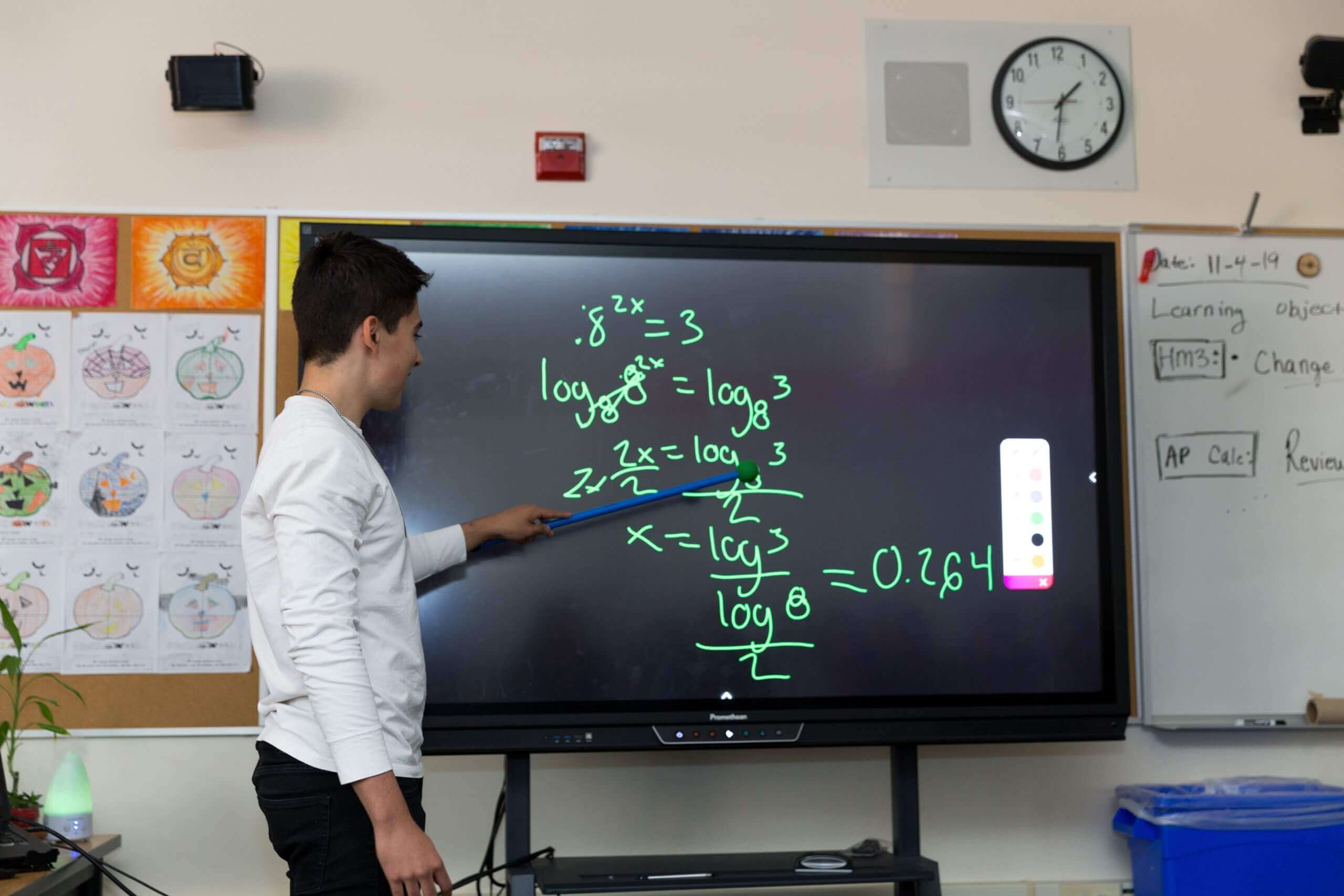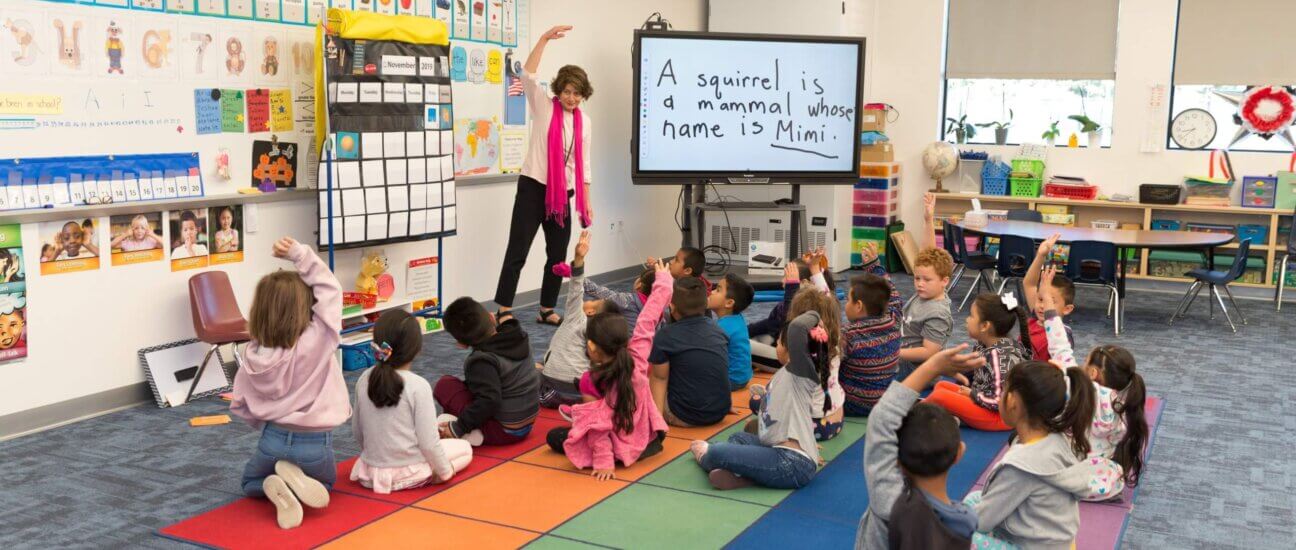
California was one of the hardest-hit states for much of the pandemic, dealing with more cases of COVID-19 and stricter lockdowns than many other parts of the country. And that meant school districts throughout the state were much slower when it came to opening back up to in-person learning.
One notable exception: the Napa Valley Unified School District (NVUSD).
“We were one of the first districts of our size and scale in the state of California to open up for in-person, hybrid instruction during this pandemic year—kindergarten through 12th grade,” observed Superintendent Dr. Rosanna Mucetti with pride in her voice. “And technology played an absolutely critical role in that.”
NVUSD has a technology program that would be the envy of any school district in the world. But how did a district with 29 schools and more than 17,000 students—55% of whom are considered socioeconomically disadvantaged—do it? According to Mucetti, the secret to Napa Valley’s success was the extraordinary commitment of its teachers, staff, board, and community to deliver quality, meaningful instruction to their kids, even in the midst of a once-in-a-lifetime pandemic.
Promethean panels were a must-have
Not every school district has a distinct notion of what an ideal technology program should look like, but for Mucetti, interactive panels were a must. “Promethean was absolutely a key component to our technology integration plan,” she said. When Mucetti arrived in 2018 and Assistant Superintendent Rabinder (Rob) Mangewala joined NVUSD in 2019, they knew they needed both a one-to-one device-to-student ratio and an ActivPanel in every classroom.
“There were a number of reasons that we landed on Promethean,” explained Mangewala. “One being it’s a very high-level product, and it’s a sustainable product, too.”
The initial technology plan adopted by the school board years earlier involved older whiteboards with projectors, but Mangewala and Mucetti advocated for ActivPanels, because they wanted a solution that had a high level of functionality and would not become outdated too soon.
So they set to work convincing the school board and the larger community that they needed to transform their strategy. “The board got behind that and were very, very supportive,” recalled Mucetti. “We had to give them the proof point and the deliverable that we would be able to implement and scale quickly.” Which is exactly what they did.
“It was a very quick rollout,” said Mangewala, noting the district worked very closely with both Promethean and its technology selling partner STS Education. “They did a fantastic job from the beginning to the end in terms of ensuring that those products got into place and providing the white-glove service that went along with it,” he said. “Today, we’re still very close partners with both Promethean and STS Education.”
Satisfying a diverse range of stakeholders
Since the ActivPanels and student devices were implemented before the pandemic hit in early 2020, Napa Valley was well-positioned to support hybrid learning in the fall, when they were able to open schools again. “Anywhere from 30% to 40% of our families wanted in-person learning, while a significant majority wanted to remain online and do virtual learning,” said Mucetti. “So we had to position our teachers in the classroom in the hybrid model while we tried to meet those two stakeholder interests.”
But there was a third stakeholder group that needed to be attended to as well, and that was the teachers themselves.

“We have a very collaborative partnership with the teachers’ association, which allows us to be able to get the job done for kids,” noted Mucetti. She explained that when it came time to open schools back up, the administration first had to reassure teachers they could feel safe and comfortable returning to the classroom. “Secondary to that, we had to prove to them that they were going to have the tools they need to consistently and sustainably deliver hybrid instruction.” Mucetti credited Mangewala and his team for making sure that the technology was in place for teachers from day one. “That gave them trust in our relationship and the confidence they needed that they could execute on their job and deliver for kids.”
Technology is critical, but so is real-world interaction
“School districts, especially in California, are dramatically underfunded, and often have to rely on their local bond measures to be able to close the technology gap,” explained Mucetti. Because the Napa Valley community took it upon themselves to provide this technology to its young people, Mucetti has noticed a real culture shift. “There’s an acceptance among the community that your local bond measure can be used to solve these technology issues and get something new.”
Mucetti’s and Mangewala’s ability to help convince the Napa Valley community of the importance of technology in education had a major impact on the district’s ability to implement hybrid and remote learning and optimize the learning experience for their students. But now that the worst of the pandemic is behind them and a full return to the classroom seems imminent, the two are recognizing the indisputable value of real human interaction.
“We’ve had to overly rely on technology to deliver on education in the pandemic environment. Now we have a proof point that we can completely virtualize the system—deliver education in ways that we could have never imagined,” observed Mucetti. “But now I think we’ve come to really value brick-and-mortar school and have an understanding of how important the human side of education is.”
For Mucetti, the pandemic brought about a technology revolution that will allow for even more innovation going forward. “There will be things that stick from the pandemic environment that will allow us to work more efficiently and effectively into the future,” she said. “But we still need an education with that human connection component. I don’t think we’ll ever undervalue that again or take it for granted.”
Download the Napa Valley USD customer story here.


